BABY Audio Transit Review
- August 29, 2023
- by Steve Castellano
- Product Intelligence Report
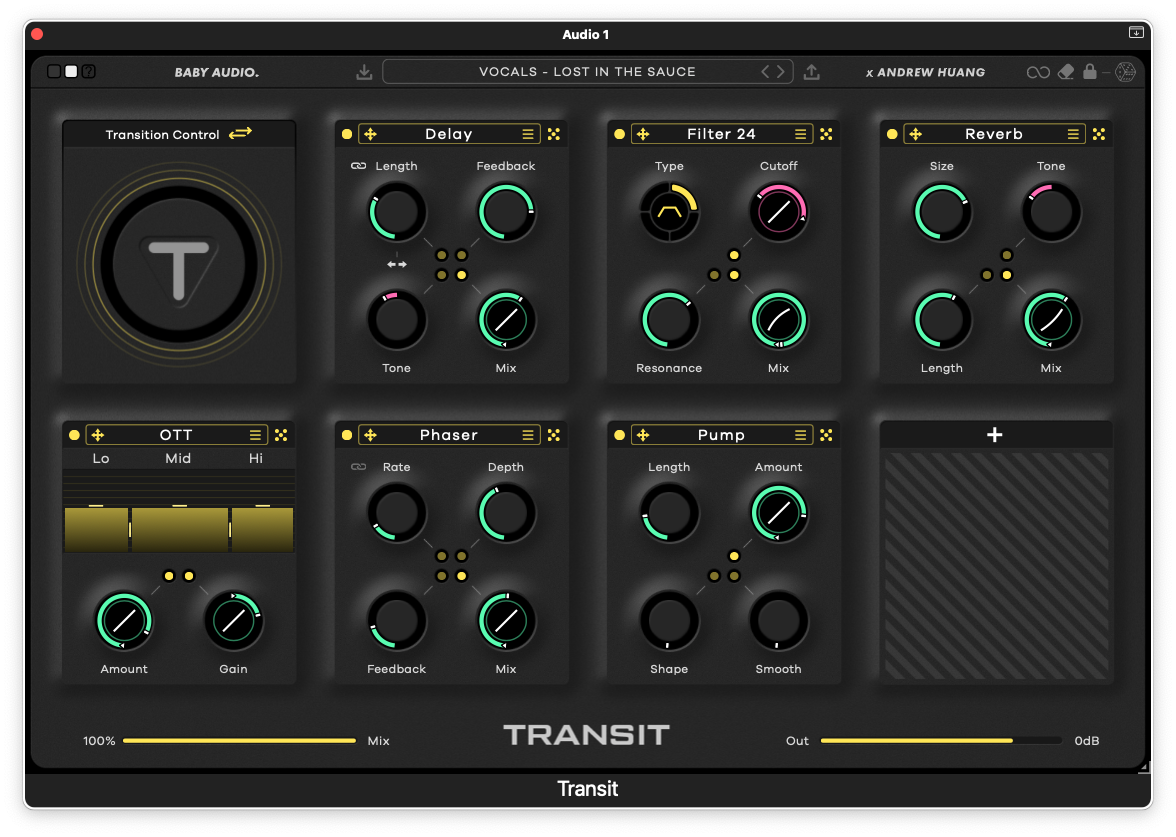
Music is all about change. It’s dangerous to make sweeping generalizations but I don’t think I’m going out on a limb here – even avante-garde minimalist compositions and contemporary drone performances evolve over time (just much more slowly). And in modern music production, particularly dance music production, effects are no longer just static elements but a dynamic part of the arrangement as well.
In pre-digital days, adjusting effects in happened in real time during mixdown, with as many hands as were available. The advent of MIDI meant some parameters could be controlled automatically, by sequencers or computers. And in modern DAWs, plugins are controlled by automation lanes, with curves and switches drawn in, or recorded from real-time fader tweaks, for each parameter. More effects mean more parameters to automate, and your automation curves can stack up pretty deep.
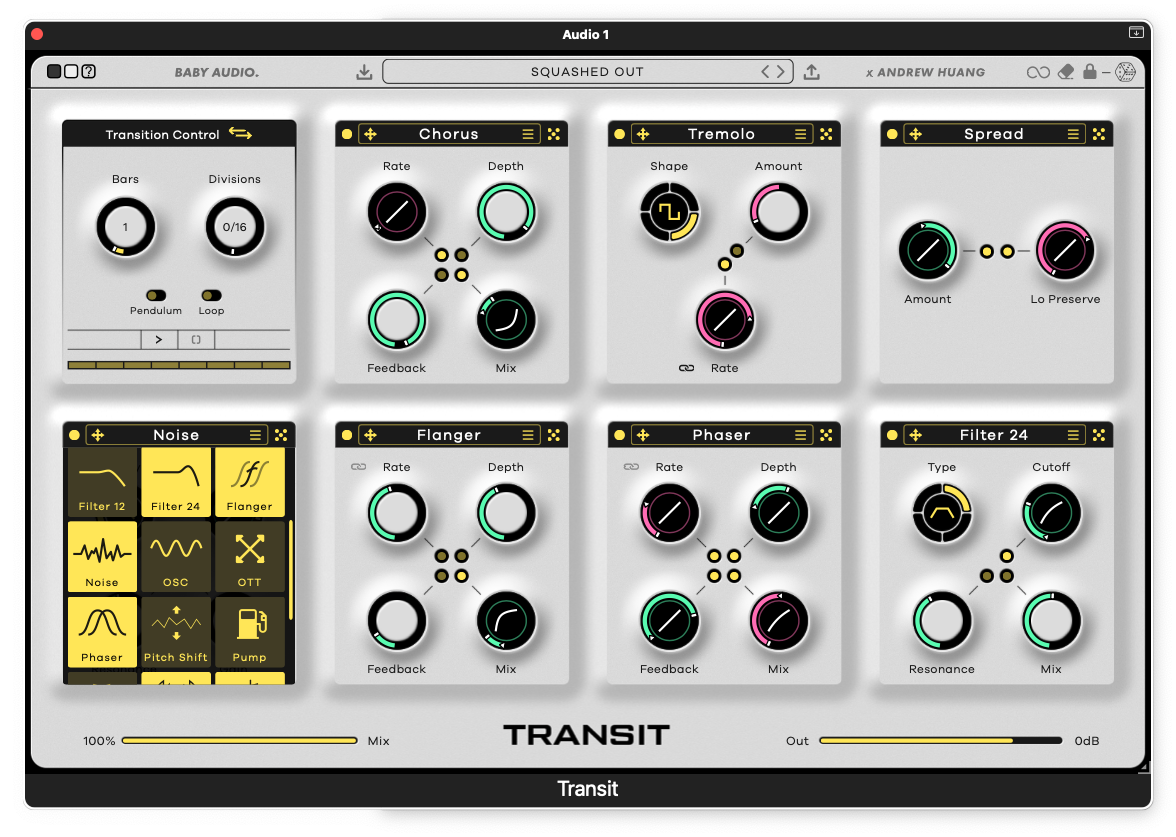
Multi effects to go
Enter BABY Audio’s new Transit plugin, a powerful and exciting multi-effects processor created in collaboration with Canadian musician, producer, YouTuber and all-around pretty talented human Andrew Huang. On its face, Transit looks like a stylized pedalboard with eight available pedal locations. Closer examination reveals one of the slots to be occupied by a master control knob – a global Macro Control. The remaining slots can each be filled by one of 18 effect types:
- Autopan
- Bitcrusher
- Chorus
- Delay
- Distiortion
- 12 db/oct filter
- 24 db/oct filter
- Flanger
- Noise (with resonant filter)
- Oscillator
- OTT (“Over The Top” multiband compressor)
- Phaser
- Pump (ducking effect)
- Reverb
- Spread (stereo spread)
- Tremolo
- Utility (gain/pan/tone control)
Each of these effects has up to four automatable parameters and can be controlled by the global Macro Control. This means you could conceivably have seven effects with a total of twenty-eight parameters controlled by one knob, which in turn can be controlled by a single automation lane in your DAW. What does all this mean? You can create drastic, sweeping audio transformations, or transitions, with the turn of a single knob. Or, if you prefer, sequenced gradually over a preset number of bars by Transit’s built-in Motion Sequencer.
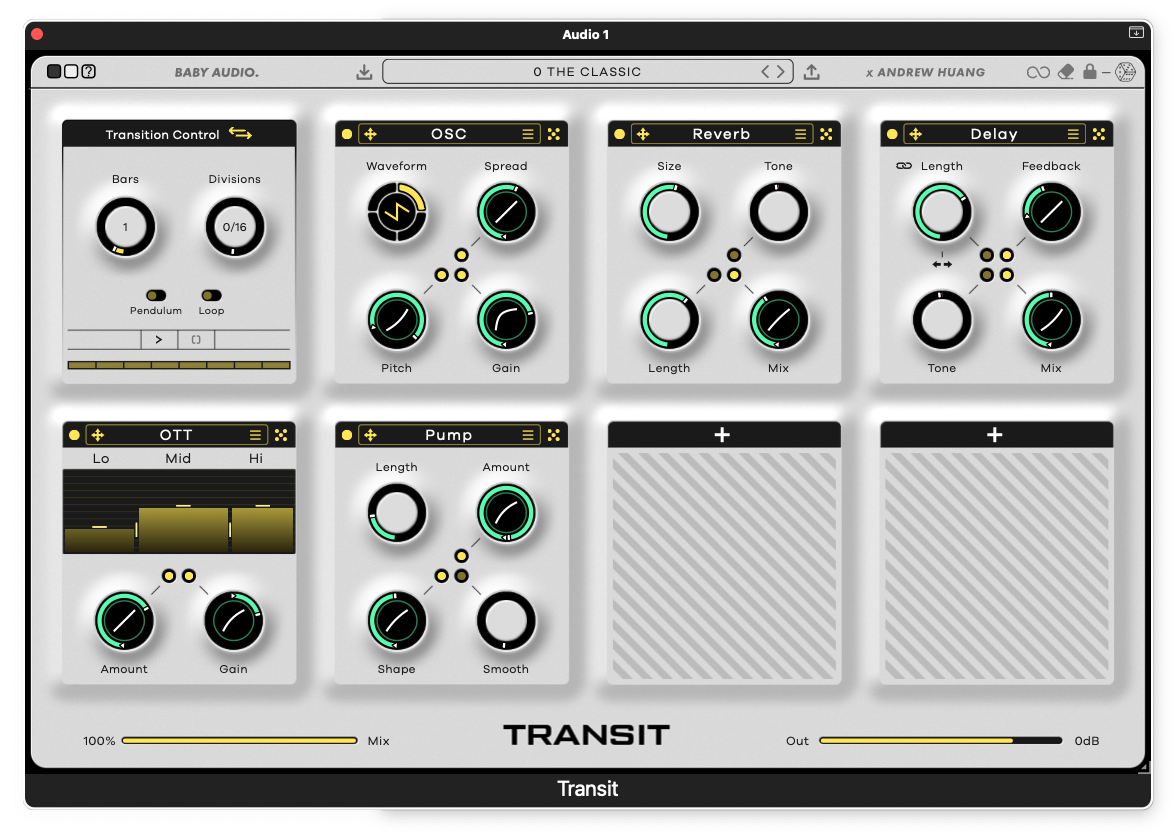
You can dance if you want to
If some of the included effects seem inspired by dance music and DJ remixes, it’s not surprising. Patch zero from the “Transitions” category of Andrew’s artist presets is titled “The Classic,” and is indeed a classic rave-type effect (to my Gen X ears), a detuned oscillator sweep with OTT compression and simulated ducking on the downbeat. I predict Transit will be a go-to plugin for remixers in short order.
EDM production techniques have been mainstream for decades of course, which means the types of transitions that Transit excels at could be equally at home in a pop tune, serving as a build to a chorus, an instrumental break, or honestly wherever you feel you’d like to drop one in. Built-in pendulum and loop modes mean you can create an undulating effects chain that can underpin an entire section or track. I also found these modes handy for previewing the supplied artist presets.
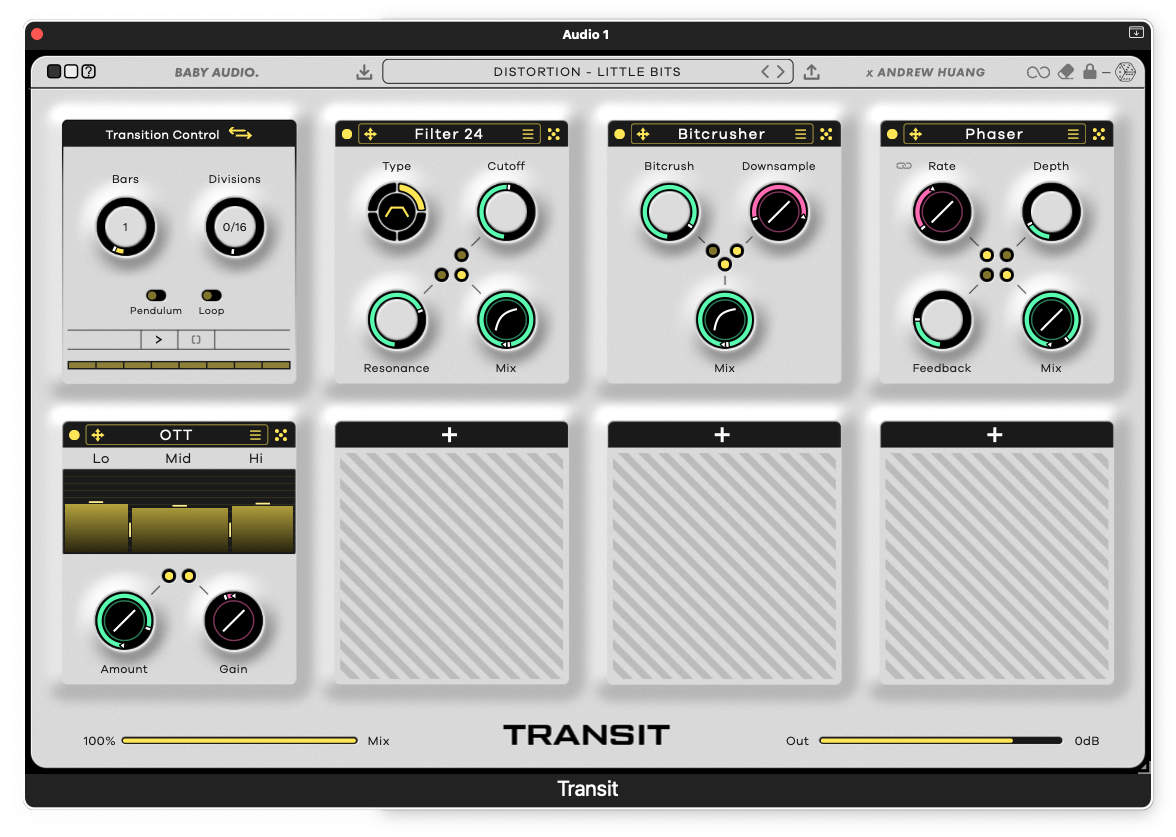
Presets and patching
Flipping through these presets I found some interesting surprises. The “Little Bits” Distortion patch, for example, uses an ingenious combination of bandpass filtering and bit crushing to gradually reduce a track to a pointillistic sequence of unrecognizably distorted transients. “Anything 2 Pad” uses Reverb, Delay, Pump and Chorus to create a granular wash that does just what it says on the tin. Modestep’s “Downlifter 3” uses a combination of modulated Tremolo, filtered noise and distortion to create sounds that remind me of the hover-vehicles from the original Blade Runner movie. Andrew Huang’s own presets include an “Other” category, conveniently tagged with Drums, Distortion, FX, Synths and Vocals to further illustrate the plugin’s flexibility as a production tool.
After exploring the presets I wanted to get a little more in-depth with the individual effects. The user interface is very copy-light, relying more on easy-to-grasp graphics and icons. A yellow dot indicates a control that is dynamically modified by the Macro Control. A diagonal white line on a control indicates its slope, and can be dragged up and down for exponential, linear or logarithmic response. The best example of how easy Transit is to program is the OTT multiband compressor – simply click and drag the gain and crossover points for each of your three bands, and when it sounds good to you, adjust effect amount and overall gain, you’re done.
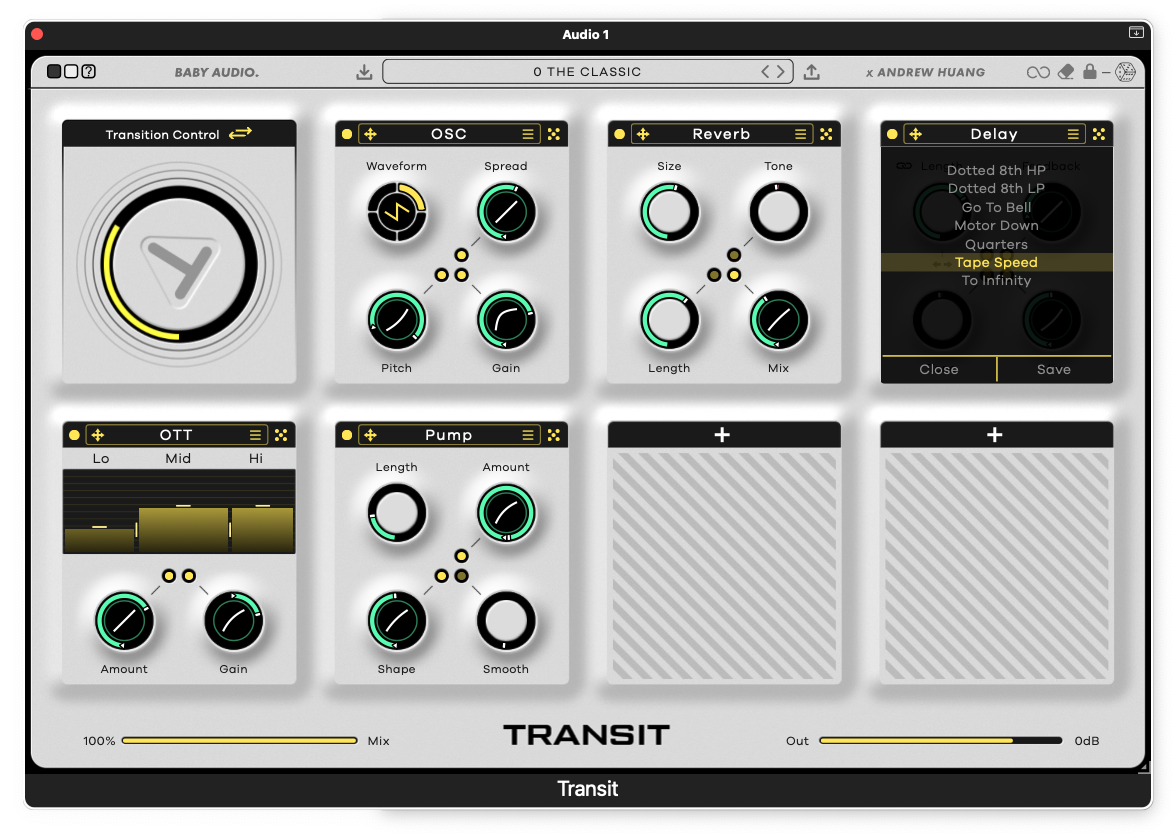
A hamburger menu by the effect name gives you a drop-down menu of starter presets, which is a handy way to explore an individual effect’s features. At one point I clicked “Tape Speed” on the Delay effect while a drum track was playing and was rewarded with what I’d call “instant Bela Lugosi’s Dead.” To further speed up the creation of new and unique patches, each effect slot has its own randomize button, and you can also roll the dice on the entire patch, randomizing effects and parameter settings globally.
Conclusions
Given all this functionality and the low cost of entry to all this audio excitement, it seems a bit churlish of me to create a wish list, particularly as I’m reviewing a beta version of the plugin. But I would love for the next module to be a syncable LFO that could be patched to the parameters of other effects to further liven up a filter or oscillator sweep. I also wouldn’t mind seeing some more obvious visual feedback when I select individual module presets from the hamburger menus – maybe the selected preset gets highlighted when you click on it, or perhaps the menu overlay is a little less opaque, so I can see the knobs underneath changing a little more clearly.
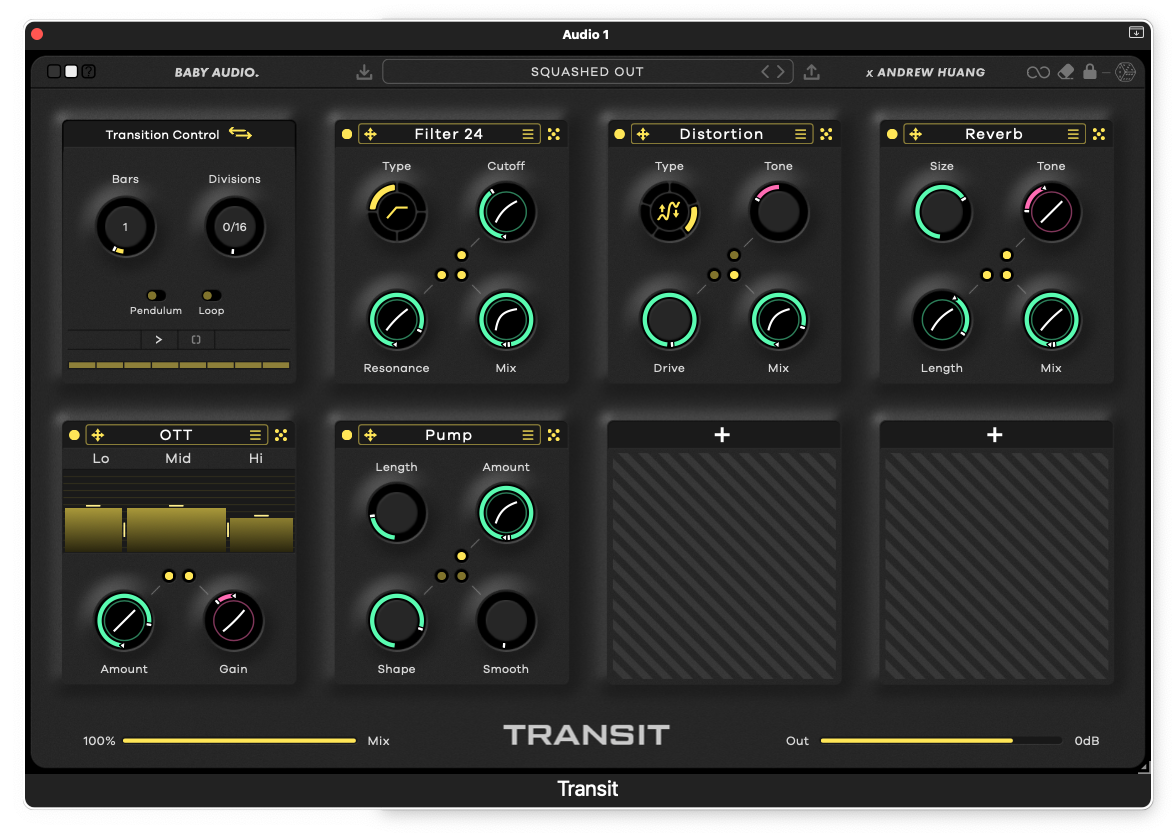
Transit is tons of fun to use and a great way to dial up the energy of a mix. Even a novice could create a unique and exciting DJ set first time out without too much instruction. More experienced producers will find a wide range of expression among the many effect options and presets, and as its developers intended, save themselves a lot of legwork in the automation lanes. Plus, even without the automation, it’s a seven-slot multi-effects plugin with 18 fully-configurable effects types. I can easily see it finding a home on individual channels, subgroups and entire tracks in my future mixes.
Author

Steve Castellano
Steve Castellano is a musician and writer living in Toronto, Canada. He holds a music degree from York University, where his focus was electronic music and composition. He currently records and performs modular electronic music under the name Elettronica Sperimentale.